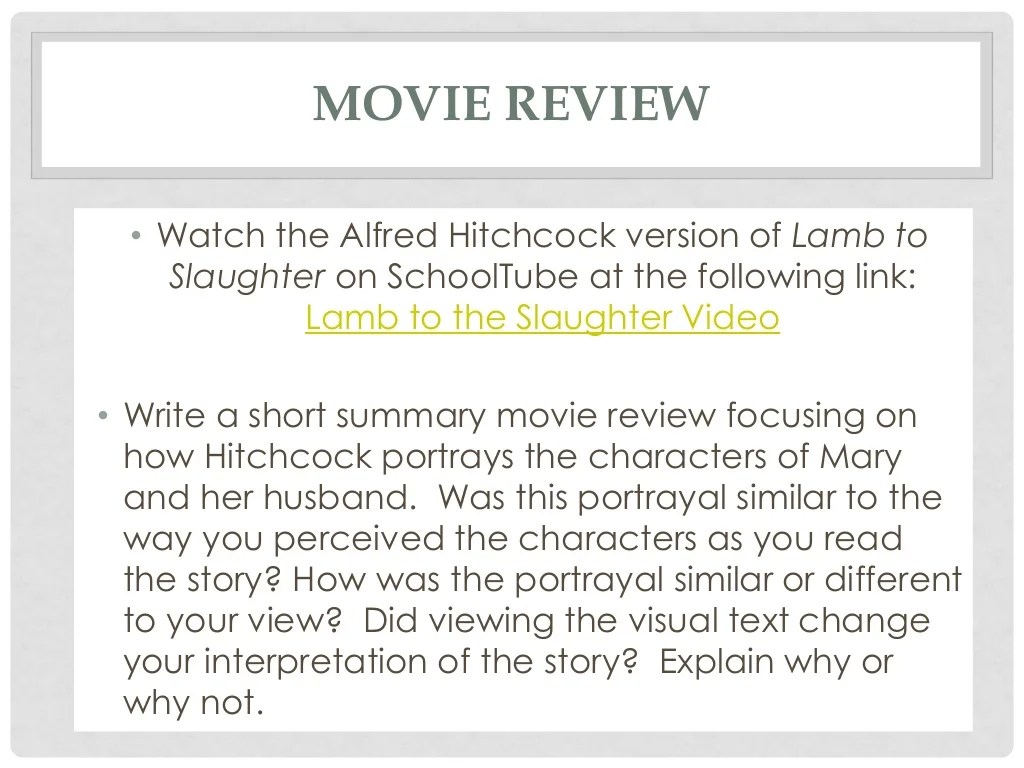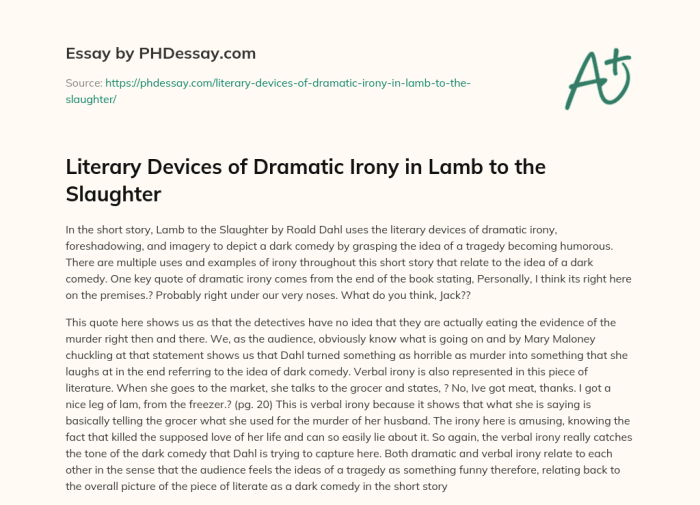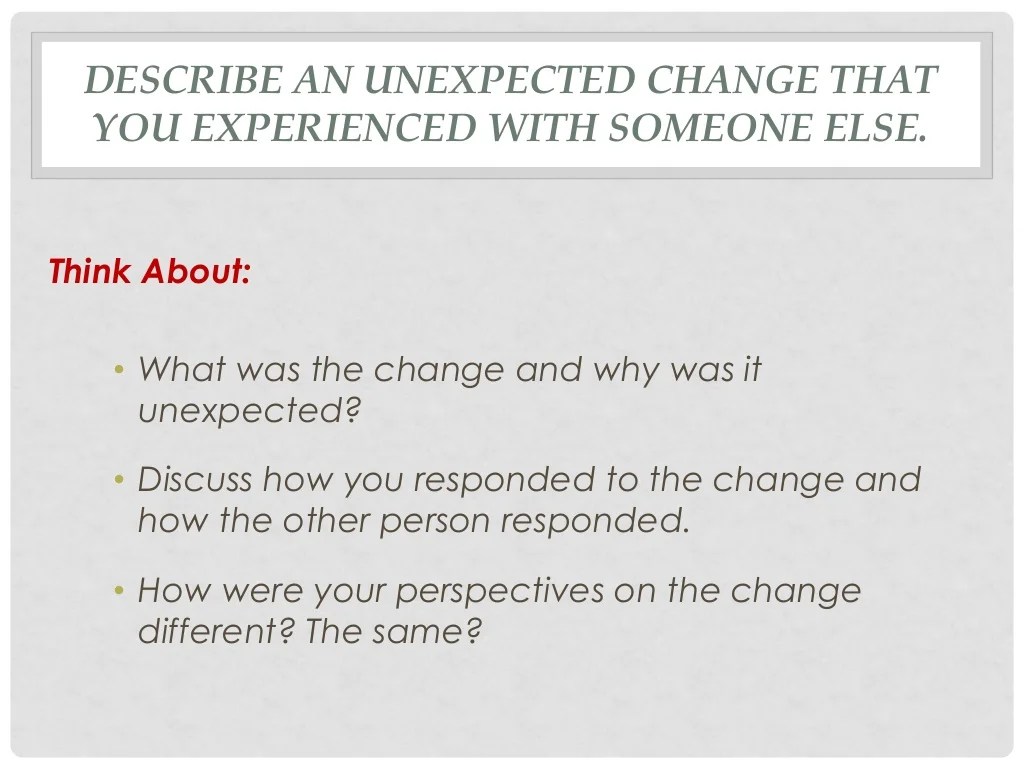Lamb to the slaughter literary devices – The acclaimed short story “Lamb to the Slaughter” captivates readers with its intricate web of literary devices that enhance its themes and create a profound impact. From the outset, symbolism and foreshadowing establish an ominous atmosphere, while irony and characterization reveal the complexities of human nature.
Throughout the story, the juxtaposition of innocence and violence is explored through the symbolism of the lamb and the kitchen, respectively. Irony permeates the narrative, highlighting the stark contrast between appearances and reality. Foreshadowing techniques create a sense of unease, hinting at the impending tragedy that awaits the characters.
Symbolism and Metaphor

In “Lamb to the Slaughter,” Roald Dahl employs symbolism and metaphor to create a rich and evocative narrative. The lamb, as the story’s central symbol, represents the innocence and vulnerability of the protagonist, Mary Maloney.
The kitchen, where the story’s pivotal events unfold, serves as a metaphorical battleground. Mary’s transformation from a gentle and devoted wife to a cold and calculating killer is played out in this domestic setting.
Other symbols and metaphors in the story include the frozen leg of lamb, which foreshadows Mary’s murderous intent, and the stove, which represents her primal instincts.
Irony and Foreshadowing

Dahl uses irony to create a sense of suspense and unease throughout the story. The contrast between Mary’s sweet and innocent demeanor and her violent actions is particularly ironic.
Foreshadowing techniques are also employed to build tension. The frozen leg of lamb, for example, hints at the impending violence. Mary’s cold and calculating actions in the kitchen further foreshadow her transformation.
Point of View and Characterization: Lamb To The Slaughter Literary Devices
The story is narrated from a third-person limited point of view, focusing primarily on Mary Maloney’s thoughts and experiences. This perspective allows the reader to gain insight into her motivations and transformation.
Mary Maloney is a complex and enigmatic character. Initially portrayed as a loving and submissive wife, she undergoes a profound transformation as the story progresses. Her descent into violence reveals the depths of her hidden strength and desperation.
Other characters in the story, such as Patrick Maloney and the police officers, play important roles in shaping the events and revealing Mary’s character.
Theme and Conflict

The central theme of “Lamb to the Slaughter” is the destructive nature of violence. Mary’s actions, while driven by desperation, ultimately lead to her own destruction.
The story also explores the internal and external conflicts that drive Mary’s actions. Her internal conflict stems from her desire to protect her husband and her own sense of self-preservation. The external conflict arises from the societal expectations and constraints placed upon her as a woman.
The story’s themes and conflicts have social and psychological implications, shedding light on the complexities of human nature and the consequences of violence.
FAQ Corner
What is the significance of the lamb in the story?
The lamb symbolizes both innocence and vulnerability, foreshadowing the events that unfold and the tragic consequences that follow.
How does the use of foreshadowing contribute to the story’s impact?
Foreshadowing creates a sense of unease and anticipation, hinting at the impending tragedy and building tension throughout the narrative.
What is the role of irony in the story?
Irony highlights the contrast between appearances and reality, revealing the characters’ hidden motives and the true nature of their actions.